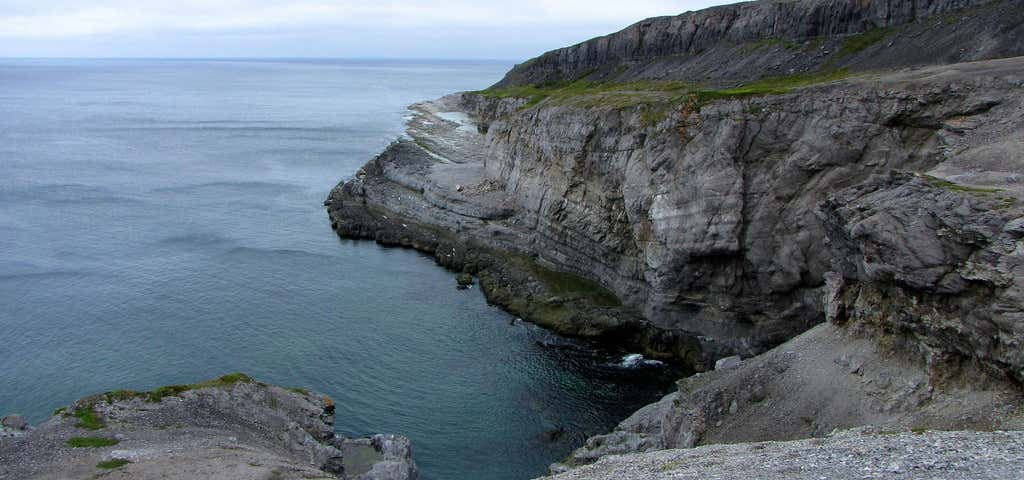“home to arctic oddities”
Located near the tip of the Great Northern Peninsula and surrounded on three sides by cold waters from the Strait of Belle Isle, the peninsula of Burnt Cape has some of the most arctic conditions on the Island of Newfoundland. But it is exactly this cold climate, together with a unique landscape and calcium-rich soil, that allows northern plant species to grow here in a rich and rare variety. The 3.6-km2 ecological reserve takes up almost all of the Burnt Cape peninsula. And though it may have the coolest conditions on the Island, the Cape is home to more than 300 plant species-about 30 of which are considered rare. From a distance the Cape appears desolate, yet up close, particularly during the months of June and July, the tiny arctic plants provide a rainbow carpet of colour. Some of these plants are growing at their southernmost limits, others are at their northernmost. Some can be found only in a few other areas in northwest Newfoundland. Among the most significant are arctic bladderpod, alpine arnica, dwarf hawk's beard, Burnt Cape cinquefoil-the Northern Peninsula is the only place in the world where this species grows-and the threatened Fernald's braya (COSEWIC, 2000). These arctic-alpine plants are relicts of the flora that invaded when the last glaciers retreated. Frost Polygons The Cape's arctic conditions have also led to the formation of "frost polygons"-strange, geometric circles or lines of rocks on the surface of the ground. Caused by intense freeze/thaw cycles, they are usually found only in northern or Arctic areas of permafrost. The creation of the reserve is a tribute to the efforts of local citizens, concerned supporters, scientists, conservation groups, and government. With their support, Burnt Cape Ecological Reserve was fully designated in March, 2000, to protect the area's high concentration of plant species, particularly its three dozen rare plants. Ongoing efforts to protect the flora at Burnt Cape include research by Memorial University on the impacts of climate change and pathogens on the rare plants. Visitors to the Cape should be prepared for a chilly time, even in summer. Frost can occur in any month of the year, and there is frequent rain and fog. The growing season in the Strait of Belle Isle Barrens ecoregion is the shortest on the Island. Nevertheless, the Cape can be a wonderful place to see rare plants, watch passing icebergs, find fossils and unique geological features, and spot whales, wildlife, and birds.
Reviews
Be the first to add a review to the Burnt Cape Ecological Reserve.
/-55.745833,51.573056,14/300x172@2x?access_token=pk.eyJ1Ijoicm9hZHRyaXBwZXJzIiwiYSI6ImNsdjQ5N2VtZDA2bW8ycW13ZHAxeGhjbjkifQ.UIccpoAxc7g3BAuK4s9vjg)
Burnt Cape Ecological Reserve
Hours
- Sun - Sat: 8:00 am - 11:00 pm
Problem with this listing? Let us know.
Has RV parking changed? Let us know.
-
Parking
-
Pets Allowed
-
Restrooms
-
Wifi
-
Wheelchair Accessible
-
Credit Cards Accepted
